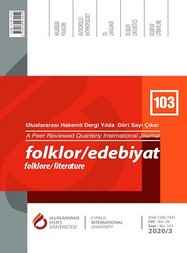Radical Feminist Echoes: Judith Thompson’s The Crackwalker and Lion in the Streets
Radical Feminist Echoes: Judith Thompson’s The Crackwalker and Lion in the Streets
Author(s): Belgin BağirlarSubject(s): Gender Studies, Studies of Literature, Other Language Literature, Post-War period (1950 - 1989), Transformation Period (1990 - 2010)
Published by: Uluslararası Kıbrıs Üniversitesi
Keywords: contemporary theater; Judith Thompson; The Crackwalker; Lion in the Streets;
Summary/Abstract: This study aims to examine the role of women’s bodies in two of the contemporary Canadian playwright Judith Thompson’s plays, The Crackwalker (1981) and Lion in the Streets (1992), from the perspective of the radical feminism, in particular, that of Kate Millet and Shulamith Firestone. Radical feminists advocate that the unfair distribution of social roles among men and women stems from biological differences and the oppressive nature of the patriarchal system. It is from this very perspective that Thompson, who has left a lasting impression on Canadian theatre with her influential avant-garde style, explores in both The Crackwalker and the highly successful Lion in the Streets the relationship between women and men within the patriarchal system. In these two-act plays, Thompson also lays bare, with her contemporary style, the manner in which women are positioned in the patriarchal society. In The Crackwalker, the themes of marriage, sexuality, and friendship are interwoven around the main characters, i.e. Theresa, Alan, Sandy, and Joe. Following their marriage, Alan’s wish to have children makes Theresa feel obliged to give birth to his child. Sandy, on the other hand, suffers her husband Joe’s horrific verbal and physical violence. The second of the two plays, Lion in the Streets, opens with the apparition of the ghost of Isobel, a little girl who was abused and then murdered, and proceeds with a chain of outwardly independent events. Thompson, who masterfully knits up the beginning and end of the play, confronts her audience once again with the oppression that women have to endure in patriarchal societies. Throughout the play, women are sexually assaulted and belittled by men motivated solely by the desire to satisfy themselves. In neither play does Thompson make room for a picture-perfect married life. Quite on the contrary, Thompson goes as far as to portray how the institution of marriage in the patriarchal system, to one extent or another, eats away at women’s bodies to the point that they are slowly worn out and destroyed.
Journal: Folklor/Edebiyat
- Issue Year: 26/2020
- Issue No: 103
- Page Range: 621-632
- Page Count: 12
- Language: English

